The roof installation process is chaotic, with many moving pieces. But as long as you hire a reputable roofing contractor, the chaos is controlled.
Unfortunately, this doesn’t make seeing things flying around your property easier or less stressful. That’s why you need to know what happens during the roof installation process so you know what to expect the moment roofers arrive at your home.
For over 30 years, the team at Bill Ragan Roofing has taken pride in helping homeowners understand everything involved with their roof replacement project. Now, I’ll do the same for you by breaking down the steps.
In this article, you’ll learn what happens before, during, and after the roof installation process.
What happens before the roof installation process begins?
While the majority of the roof installation is done on the day it’s scheduled, a few things happen the day before. One is something you have no control over, but the other two you’ll do yourself before the roof installation process begins.
The materials will be delivered to your home
The afternoon before or the morning of your roof installation, all the materials are delivered to your home. They should be dropped off and kept in a dry area near the roof access point.

The delivery’s size depends on the number of squares being installed and the type of material. This could take up a big area that can be in the way, but it’ll slowly dwindle down as the process begins.
Your vehicles need to move to avoid getting blocked in
During the roof installation process, a dump trailer and your roofing contractor’s vehicles will be in your driveway. That's why I always recommend homeowners move their vehicle(s) the night before to avoid getting blocked in if they plan to or need to leave.
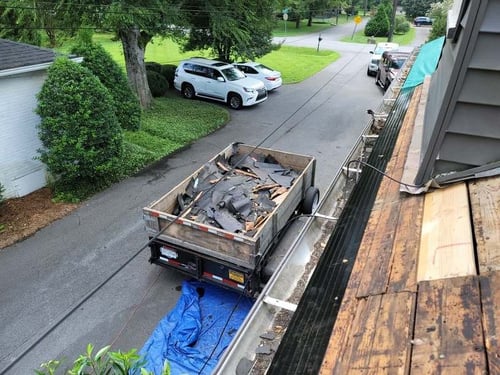
Moving and clearing everything if you need to leave could take 20 minutes or longer, depending on the size of your home and the crew. This will delay the project and add more time to complete, so it’s better to be prepared by moving your vehicles out of the way, whether you plan to leave or not.
Inspect your property for existing damage
The day before your new roof’s installation, you need to go around the outside of your home and inspect your property. Look for torn window screens, dented gutters, damaged light fixtures, or any other damage.
Whether you find damage or not, take pictures of everything before the roof installation starts. This is the best way to determine if the roofing contractor caused any damage during the project.
What happens during the roof installation process?
Now, it’s time for the roof installation process to begin. The exact roof installation steps vary by roofing contractor and their crews.
However, you’ll find the roof installation process below is pretty routine among reputable roofing contractors.
Initial walkthrough and set up
Just like you did earlier, the roofing contractor will take pictures of noticeable damages before anything begins. This is mainly because homeowners don’t notice damage until they look at their new roof and try to blame the installers.
At the same time, the crew will set up by finding the access point, getting their tools ready, setting up generators, and doing everything else they need to get started.
Protecting your property
After getting set up, it’s time to get your property ready by setting up protective measures. Tarps are attached to the roof line and/or wooden boards are set up to cover anything around the base of your home.
.jpg?width=500&height=300&name=PropertyProtection%20(2).jpg)
This lets roofing debris slide to the ground instead of falling and damaging your landscaping. The crew also covers your attic and pool (if applicable), moves things off your patio/deck, and ensures all vehicles stay on paved surfaces.
If a roofer doesn’t do this, there’s a good chance they have a clause in the fine print of their estimate releasing them of liability for property damage. To avoid this, make sure to review your roof estimate carefully before signing anything.
Tearing off your old roof
After setting up the property protection, it’s time to start tearing off your old roof. They’ll start tearing off on the corner farthest away while gradually moving toward the dump trailer.
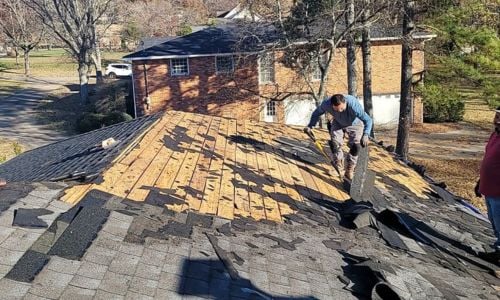
Some crew members will tear off, while others pick up the debris to ensure it gets to the right area. As soon as a section is torn off and cleaned up, your gutters will also be cleaned out.
Replacing damaged roof decking
Once a section is torn off, the roof decking needs to be inspected to ensure it can handle your new roof. If there are rotting, broken, or compromised wooden boards, they must be replaced before installation can begin.
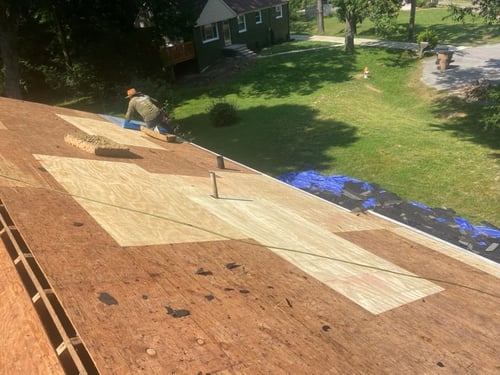
There’s a good chance that some roof decking will need to be replaced. However, it’s rare for entire sections or the full roof deck to need replacing.
Just know that plank decking with more than a 1/8” between the planks must also be replaced per shingle manufacturers’ installation instructions before roofing materials can be nailed on.
Installing your new roof
After tearing off your old roof and checking the integrity of the decking, your roofing contractor is ready to start the actual roof installation process. Following the torn-off sections, drip edge is installed on your roof’s edges, ice and water shield is installed in roof valleys (and other problem areas), and roof flashing is replaced.
Next, underlayment is installed over the decking, going over the drip edge along the eaves and under the drip edge on the rakes. Once your roof is dried in with underlayment, they’ll start installing shingles.
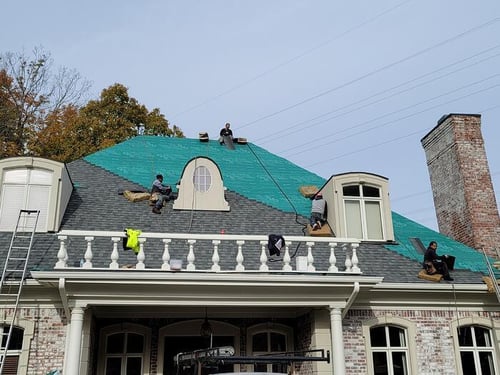
First, a row of starter shingles is installed, followed by rows of shingles, starting at the bottom and working up to the ridge. When they’re done with the shingles, they’ll install ridge capping and replace the roof vents.
Once this is done, your roof will be completely closed, and the installation part of the process will be officially over.
Cleaning up after the roof installation process is over
Once the actual roof installation is complete, your roofing contractor starts the cleanup process. They’ll blow off your roof, gutters, and downspouts to remove leftover debris and ensure it’s completely clear.
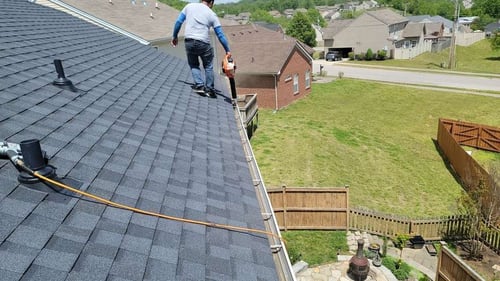
After they’re off your roof, they’ll roll up all the tarps, get their tools, and walk around your property picking up debris or trash that was missed. A crew member or two will also walk around your property with a strong magnet to ensure no loose nails in your yard or driveway.
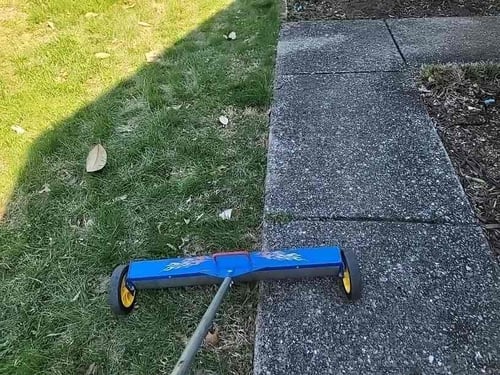
After they leave your driveway, it should look like roofers were never there, except for the great-looking new roof.
Final inspection
After your roof has been installed and your property has been cleaned up, your roofing contractor or point of contact will inspect the finished product. They’ll make sure the final installation quality matches the high standards you’d expect after such a large investment.
They’ll double-check every part of your roof to ensure it’s properly installed, everything is up to code, and the areas known to leak frequently (around penetrations, skylights, chimneys, etc.) are protected. Once they get off your roof, you’ll get your warranty information and you’ll make the final payment.
What can go wrong during the roof installation process?
Now you know what to expect from the roof installation process. The actual steps vary by roofing contractor, but reputable companies install roofs this way or very close to it.
And as I said in the beginning, the roof installation process is chaotic, but hiring a great roofing contractor makes it controlled chaos. Unfortunately, doing everything right doesn’t mean things can’t go wrong.
There’s always a chance for accidents or something else to happen when your new roof is installed. That’s why I wrote another article breaking down what can go wrong when getting a roof replacement.
Check out 8 Things That Can Go Wrong During a Roof Replacement to learn more about what can happen during the roof installation process.



